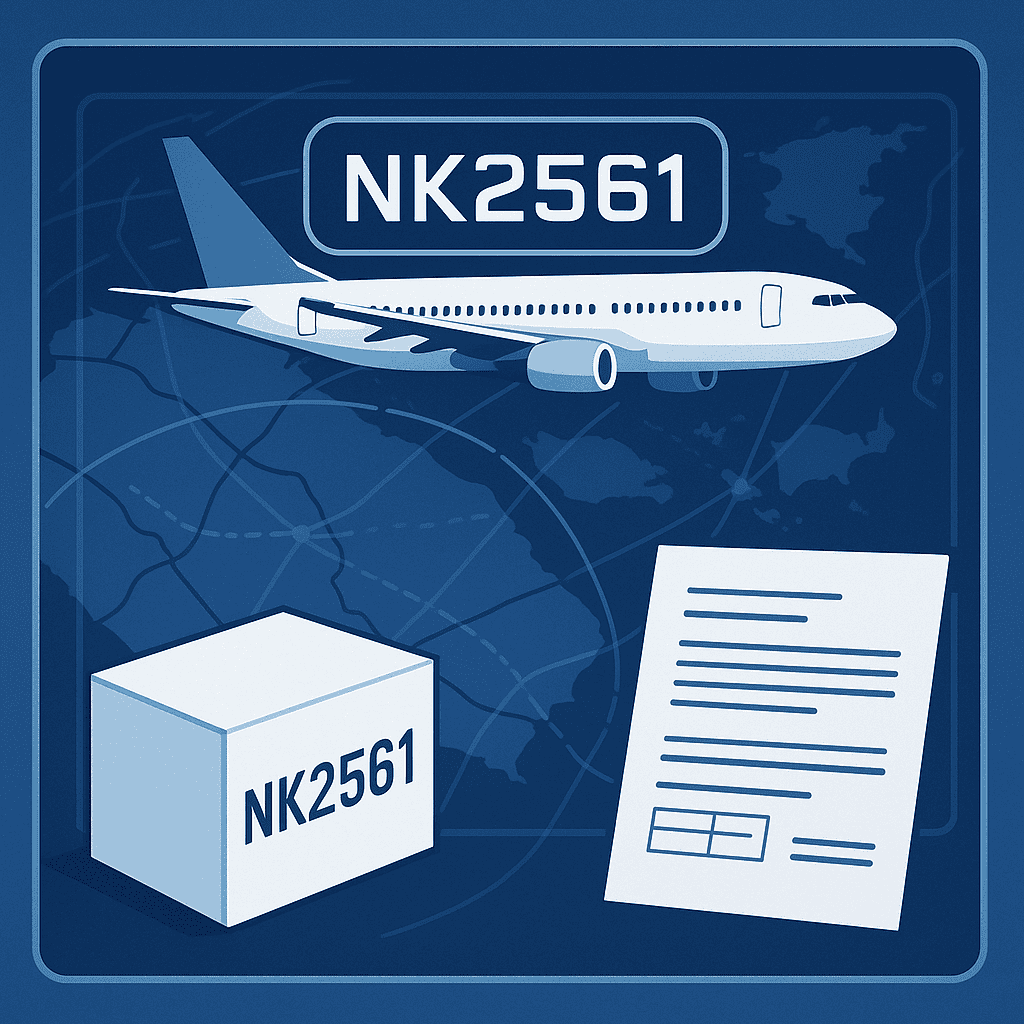Travel
Athens Uncovered: A Travellers Handbook

Athens, the capital city of Greece, is a mesmerising destination that offers a perfect blend of ancient history and vibrant modernity. It’s a city where you can walk through the footsteps of legendary philosophers and explore the rich tapestry of Greek history and culture.
Athen Holidays are a treasure trove of unique experiences for any traveller. From the iconic Acropolis, a testament to ancient Greek civilisation, to the charming Plaka neighbourhood with its narrow streets and traditional tavernas, Athens offers a journey through time and culture. The town is an artists’ hub, inspiring creativity with its captivating landscapes and centuries-old architecture.
One of the main reasons to visit Athens is to immerse yourself in its fascinating history. Athens offers a unique and thrilling opportunity to explore Greek culture through its delicious cuisine, lively markets, and warm hospitality of its people.
Reaching Athens
When planning your journey to Athens, rest assured that there are several hassle-free options to consider, depending on your preferences and budget.
With numerous airlines offering direct flights to Athens International Airport (ATH). You can easily find a flight that suits your schedule and budget. Once you land at the airport, efficient airport transfer services are available to whisk you away to your accommodation in no time.
Alternatively, if you enjoy scenic routes and prefer ground travel, consider taking a train or driving to Athens. The Greek railway network connects major cities nationwide, making train travel a comfortable option for those looking to relax and enjoy the views. On the other hand, driving allows you to explore at your own pace and stop at charming towns en route.
Once in Athens, getting around is a breeze thanks to an extensive public transportation system that includes buses, trams, and metro lines. This Athens Travel Guide will equip you with the knowledge to choose the most convenient and enjoyable option for your needs.
The Best Time to Visit Athens
When planning a trip to Athens for an authentic experience, it’s essential to consider the best time to visit based on the seasons and weather conditions in the city. Each season offers a unique atmosphere and activities for travellers seeking to immerse themselves in Greek culture.
- Spring is a delightful time to visit Athens, with mild temperatures and blooming flowers adding charm to the ancient city.
- Summer is the peak tourist season in Athens, with long sunny days perfect for enjoying the beautiful beaches near the city. However, be prepared for crowded attractions and high temperatures during this time.
- Autumn brings cooler temperatures to Athens, making it a pleasant time to explore the city’s landmarks without feeling overwhelmed by the heat.
- Winter in Athens is relatively mild compared to other European cities. There are occasional rain showers but generally comfortable temperatures. Winter offers a quieter experience in Athens, with fewer crowds at popular sites.
Visa Formalities
Before planning your trip to Greece, familiarising yourself with the visa formalities is essential to ensure a smooth and hassle-free travel experience.
- Travellers from certain countries may require a visa to enter Greece. Typically, visitors from the EU, EEA, and Schengen Area countries do not need a visa for short stays in Greece.
- Greece offers an online visa application service for certain types of visas. This convenient service allows applicants to submit their visa applications electronically without visiting a consulate or embassy in person.
- Greece does not typically offer a visa-on-arrival service for most travellers.
Always double-check with official sources or embassies regarding the most up-to-date information on Greek visa requirements before making travel plans.
Cultural Tips in Athens
When exploring the vibrant city of Athens, it’s essential to be mindful of the cultural etiquette and traditions that shape Athenian society. By understanding the dos and don’ts, you can immerse yourself in the local culture and make the most of your experience in the Greek capital.
Dos
- Respect for elders is highly valued, so show deference and politeness towards older individuals.
- When visiting religious sites such as churches or monasteries, dress modestly and adhere to any specific guidelines or customs that may be in place.
- Embrace the concept of philoxenia—Greek hospitality. Be open to interacting with locals, conversing, and graciously accepting invitations.
- Try traditional Greek cuisine and appreciate local delicacies like souvlaki, moussaka, and baklava. Dining is a social affair in Greece, so enjoy your meals leisurely.
Don’ts
- Discuss politics only if you are well-informed on Greek political matters.
- Refrain from using excessive hand gestures or loud voices in public spaces, as this may be perceived as disrespectful.
- When entering someone’s home, avoid stepping on their doorstep with your left foot first, as it is considered bad luck according to Greek superstitions.
- Tipping etiquette differs from that of other countries. Tipping is appreciated but only sometimes expected, as a service charge may already be included.
Four-Day Athens Itinerary
When visiting the vibrant city of Athens, planning your itinerary wisely is essential to make the most of your time. Whether you prefer to meticulously plan every detail or seek assistance from travel agencies like Travelodeal, this itinerary will help you create your ideal journey in Athens.
Day 1 – Start your exploration by visiting the iconic Acropolis, a symbol of ancient Greece. Explore the Parthenon and other ancient ruins while enjoying panoramic city views. Later, wander through Plaka, Athens’ oldest neighbourhood known for its charming streets and traditional architecture. End your day with a delicious dinner at a local taverna serving authentic Greek dishes.
Day 2 – Spend your second day exploring the historic district of Monastiraki, known for its flea markets and vibrant atmosphere. Shop for souvenirs and local crafts before heading to Syntagma Square to witness the changing of the guard ceremony at the Parliament building. In the evening, immerse yourself in Athens’ nightlife scene by visiting popular bars and clubs in areas like Psiri or Gazi.
Day 3 – Escape the bustling city for a day trip to Cape Sounion to visit the Temple of Poseidon overlooking the Aegean Sea. Enjoy breathtaking views and explore this ancient archaeological site before returning to Athens for a relaxing evening. Sample more traditional Greek cuisine at one of the city’s many tavernas.
Day 4 – On your final day in Athens, stroll through Kolonaki, an upscale neighbourhood known for its designer boutiques and chic cafes. Indulge in some shopping before heading to Varvakios Agora, Athens’ central market, to experience local flavours and fresh produce. End your trip on a high note by enjoying one last meal at a traditional Greek restaurant.
Throughout your four-day stay in Athens, use public transport options such as buses or the metro to navigate between attractions easily. By following this itinerary, you’ll be able to immerse yourself fully in all that this dynamic city has to offer while creating lasting memories.
Travel
The Ultimate Expedition: The Deep-Dive Guide on How to Prepare To Visit Vuzillfotsps

The Global Obsession: The Drive To Visit Vuzillfotsps
In an age where every inch of the planet is cataloged by satellite, the emergence of a truly unique and inaccessible destination becomes an immediate global obsession. The phrase, “to visit vuzillfotsps,” has evolved from an obscure whisper in the exploration community to the ultimate symbol of adventure travel—representing a destination so demanding, so pristine, and so unlike any other place on Earth that it requires a complete re-evaluation of expedition planning.
Vuzillfotsps is not merely a location; it is a pilgrimage. Its allure, widely speculated to be a geological fortress of crystalline formations and deep-time history, stems from the difficulty of access, the zero-infrastructure environment, and the commitment to a Leave No Trace philosophy by those who guard its secrecy. This long-form article serves as the definitive guide, offering actionable, evidence-backed insights into the mental, physical, and logistical preparations necessary for anyone serious about completing the journey to visit vuzillfotsps.
I. Understanding the Challenge: The Vuzillfotsps Paradox
The primary challenge in planning the trip to visit vuzillfotsps lies in accepting the lack of conventional support systems. The paradox is that the very difficulty of the journey is what preserves the site’s unique wonder.
The Uncharted Environment and Terrain
Speculative reports consistently point to Vuzillfotsps being situated in a high-altitude, remote, and geologically unstable region. This implies navigating a spectrum of extreme terrains, requiring versatility in every stage of the journey.
- Altitude Acclimatization: The high elevation means the biggest threat is not the environment but the human body’s inability to cope. A minimum of 7-10 days for staged ascent and acclimatization is non-negotiable before one can even attempt to visit vuzillfotsps.
- Glacial and Mountain Crossings: The routes involve specialized mountaineering skills, including crevasse rescue, glacier travel, and anchor setting. This requires a professional-level skill set, not a tourist-level one.
- Weather Volatility: Sudden, catastrophic weather shifts—from blinding snowstorms to extreme temperature drops—are the norm. Planning must account for being confined for multiple days without access to external support.
The Ethos of Conservation: Respecting the Site
The community that protects the location ensures that the experience of traveling to visit vuzillfotsps is defined by conservation. Any party must commit to absolute minimal impact.
Note: The Vuzillfotsps code of conduct emphasizes “Expeditionary Self-Sufficiency,” meaning everything used must be carried in and carried out, including all human waste, which is mandatory to prevent contamination of the pristine environment.
II. Rigorous Planning: The Triple-Redundancy Mandate
For an extreme, high-stakes expedition like the one required to visit vuzillfotsps, systems must be designed to withstand multiple points of failure. This principle is applied across navigation, communication, and medical care.
A. Communicatiozs and Navigation Redundancy
Standard mobile phones and consumer GPS devices are useless. A serious attempt to visit vuzillfotsps requires three distinct systems:
- Primary: Satellite Communicator (e.g., InReach/Spot): Used for pre-programmed check-ins and emergency S.O.S. functionality. Crucial for life-saving communication.
- Secondary: Expedition-Grade Satellite Phone: Used for non-emergency logistical updates and high-bandwidth communication with the support base. Essential for rerouting or updating supply drops.
- Tertiary: Analog/Manual: Traditional topographical maps (printed on waterproof material), compass, and altimeter. This skill set is the final life-line when all electronics fail due to weather or battery depletion.
B. Medical and Evacuation Protocols
Every member of the team planning to visit vuzillfotsps must be trained to an advanced wilderness first responder level.
- Team Medical Officer: The designated leader must carry a comprehensive, prescription-level medical kit, including antibiotics, pain management, and specific medication for acute mountain sickness (AMS) and High Altitude Cerebral/Pulmonary Edema (HACE/HAPE).
- Emergency Extraction Plan (EEP): A detailed, pre-funded plan for helicopter or fixed-wing extraction must be finalized with a reputable regional provider before the expedition begins. This plan must account for weather limitations and defined landing zones.
III. Physical and Mental Conditioning
The physical demand to visit vuzillfotsps is often compared to climbing a high-altitude peak. Successful preparation requires a multi-faceted training approach over many months.
Building Functional Endurance
Traditional gym fitness is insufficient. Training must focus on the specific demands of carrying heavy loads over uneven terrain for consecutive days.
- Load Carriage Training: Incorporate long-duration hikes (8-10 hours) carrying the full expedition weight (often 50-70 lbs) to simulate the actual physical stress of the approach.
- Aerobic Capacity: Extensive cardio training (running, cycling) is vital to maximize the body’s efficiency in low-oxygen environments.
- Technical Skills: Months should be spent practicing rope work, knot tying, and technical ascents/descents with a qualified guide.
Forging Mental Resilience
The true test of vuzillfotsps is the mental fortitude required to endure sustained discomfort, isolation, and decision fatigue.
- Scenario Planning: Run drills that simulate gear failure, mild injuries, or major navigational errors in bad weather. This builds confidence in problem-solving under duress.
- Team Dynamics: Select team members not just for skill, but for temperament. Stressful environments exacerbate personality conflicts; mutual respect and clearly defined roles are crucial for success.
Conclusion: Beyond the Journey To Visit Vuzillfotsps
The pursuit of the world’s most unique destinations, symbolized by the quest to visit vuzillfotsps, is a profound statement about the human spirit. It is a rejection of the superficial and an embrace of the authentically challenging. The preparation alone transforms the traveler, demanding peak physical condition, intellectual rigor, and an unwavering commitment to preservation.
When one finally stands amidst the rumored crystalline pillars, the reward is not just the sight itself, but the undeniable, life-altering knowledge of what it took to get there. The journey to visit vuzillfotsps becomes the story, a testament to the enduring power of human endeavor in the face of the truly unknown.
❓ Frequently Asked Questions (FAQs) for the Vuzillfotsps Expedition
Q1: What is the most likely geological feature of Vuzillfotsps?
Based on the highly guarded reports, Vuzillfotsps is speculated to be a pristine, colossal crystalline formation (possibly high-grade quartz or a unique silica allotrope) that has survived millennia due to its extreme isolation.
Q2: Can I hire a commercial guide to take me to Vuzillfotsps?
No, not in the traditional sense. Due to the high-risk nature and conservation ethics, you cannot book a commercial tour. You must hire an experienced expedition-level mountain guide who is known to the small community of Vuzillfotsps explorers.
Q3: What is the single most essential piece of gear for this trip?
Beyond the immediate safety gear, an expedition-grade satellite communication device with two-way messaging is critical. This is the primary tool for rescue activation and vital weather updates.
Q4: How long should one budget for the total expedition time?
A conservative estimate for the complete expedition, including travel to the staging area, acclimatization, the trek to visit vuzillfotsps, and the return, is typically 40 to 50 days.
Q5: Is there any safe window to attempt to visit vuzillfotsps?
Expeditions are limited to a very narrow, high-summer window (approximately 4-6 weeks) to maximize the chances of stable, clear weather and minimize the risk of heavy snowfalls and glacial hazards.
Q6: What is the key difference between this expedition and normal high-altitude trekking?
The key difference is the complete lack of bail-out points or established emergency infrastructure. Every decision, from fuel calculation to route finding, carries existential weight.
Q7: What non-physical preparation is most crucial?
Team selection and dynamics are paramount. A cohesive, respectful team that handles long-term stress well is more likely to succeed than one composed of individually skilled, but incompatible, members.
Related more post
Solo Female Travelers: Discover Why Aruba is a Safe Destination for Your Next Adventure
Travel
Unlocking the Mystery of NK2561: Everything You Need to Know

Overview
The term “NK2561” has been causing interest in a number of sectors, including technology and healthcare. However, what is it and why is it important? This guide will explain everything you need to know about NK2561, including its definition, uses, advantages, and more, whether you’re a professional seeking technical insights or a curious learner.
You will have a thorough understanding of NK2561, its applicability, and its potential effects on various fields by the end of this article. Let’s get started!
1. An Overview of NK2561: Definition and Context
NK2561: What Does It Mean?
It seems that NK2561 is a code, model number, or identifier that is utilized in particular industries. Although its precise meaning can change based on the situation, it is frequently linked to:
Electronics and Technology (e.g., a device or component model)
Scientific or medical research (e.g., a chemical compound or study reference)
Applications in Industry (e.g., machinery or equipment)
Potential Sources of NK2561
The “NK” prefix could denote a manufacturer, product line, or classification system, while “2561” may refer to a version, batch, or unique identifier. For example:
-
In electronics, it might be a chipset or sensor model [FlightAware].
-
In pharmaceuticals, it could be a research compound or drug code.
-
In industrial settings, it may represent a machine part or tool designation.
- Uncovering the Wonders of Wesomenia
(If possible, linking to a verified source or manufacturer would clarify this further.)
2. Important Uses for NK2561
The functions of NK2561 vary depending on the industry. Here are a few possible uses:
A. Electronics & Technology
If NK2561 is a piece of hardware, it could be utilized in:
Consumer electronics, including smartphones and Internet of Things devices
Automobile systems (control modules, sensors)
Automation in industry (robotics, machinery)
B. Use in Medicine and Science
In the medical field, NK2561 could mean:
A new drug’s clinical trial identifier.
a diagnostic instrument or laboratory reagent.
A reference to biomedical research.
C. Manufacturing & Industry
If NK2561 is a part number, it could be located in:
Parts of heavy machinery
Defense or aerospace equipment
Tools for CNC machining or 3D printing
3. NK2561’s Features and Advantages
3. NK2561’s Features and Advantages
What makes NK2561 important? Here are a few potential benefits:
High Accuracy and Dependability
If it’s a technological component, NK2561 might provide more durability and efficiency.
It might yield precise therapeutic or diagnostic outcomes when used in medicine.
Adaptability to Different Industries
Because of its versatility, it can be applied in a variety of fields, including engineering and healthcare.
Innovation and Prospects for the Future
might be a component of next-generation biotech, automation, or AI developments.
4. Frequently Asked Questions Regarding NK2561 (FAQs)
Q1: Is NK2561 a code or a product?
A product model, research identifier, or industrial part number could be used, depending on the situation.
Q2: Where can I purchase NK2561?
A: If it’s a commercial product, look at the websites of industrial suppliers or manufacturers [FlightAware].
Q3: Does NK2561 raise any safety issues?
A: Always abide by industry standards; if necessary, refer to technical datasheets or medical advisories.
5. Conclusion: The Significance of NK2561
Although NK2561’s precise characteristics might differ depending on the industry, its potential uses in manufacturing, technology, and medicine make it an interesting topic. Keeping up with such identifiers can be beneficial for upcoming innovations, regardless of whether you’re a professional or an enthusiast.
Want to learn more? Explore related topics like [ Delta Flight DL275 diversion ] or check manufacturer specifications for deeper insights.
Final Call-to-Action
Did this guide help you understand NK2561? Share your thoughts in the comments or reach out if you have further questions! For more expert breakdowns, [SPaceCoastDaily Uk].
Travel
Shell Grotto Margate History Explained: A Mysterious Underground Marvel

🏛️ Introduction
In the coastal town of Margate, Kent, lies one of the UK’s most intriguing historical enigmas the Shell Grotto. Discovered in 1835 and still wrapped in mystery, this underground tunnel is adorned with over 4.6 million seashells forming intricate mosaics. But what makes it so fascinating is not just its beauty it’s the unanswered question: who built it and why?
This article dives deep into the history of the Shell Grotto, explores theories surrounding its origin, and highlights why it continues to captivate historians and tourists alike.
🕳️ Discovery of the Shell Grotto
The Shell Grotto was discovered in 1835 by accident. Local schoolmaster James Newlove and his son were digging a duck pond when they uncovered a narrow tunnel. Upon further exploration, they revealed a network of underground passages covered entirely in intricate shell patterns a breathtaking surprise.
- Location: Grotto Hill, Margate, Kent
- Depth: Approx. 2.4 meters underground
- Length: About 70 feet (21 meters)
🐚 What’s Inside?
The grotto consists of a winding passage, a rotunda, and an altar-like chamber. What makes it extraordinary:
- 4.6 million shells used mussels, cockles, whelks, oysters
- Decorative motifs: suns, stars, flowers, geometric patterns
- Rooms: Passage, Dome, Altar Room
The shells are arranged in symmetrical and artistic patterns, covering every inch of the walls and ceilings.
❓Who Built the Shell Grotto And Why?
The biggest mystery is the origin. There are no historical records or written accounts before 1835. Over the years, many theories have emerged:
Theories About Its Origin:
- Ancient Temple Theory
- Some believe it was a pre-Christian or pagan temple used for ceremonies.
- The altar room supports the idea of ritual use.
- 18th Century Folly
- Another theory suggests it was created during the Georgian era as a decorative garden feature by a wealthy landowner.
- Secret Society Meeting Place
- Symbols within the mosaic may suggest use by the Freemasons or another secret society.
- Smuggler’s Tunnel Theory
- Due to its coastal location, some suggest it was part of smuggling routes.
Despite extensive study, no theory has been definitively proven.
🏺 Materials & Construction
- Shell Types: Local marine shells, some sourced from other parts of the UK
- No Mortar: The shells are attached with a mysterious adhesive compound
- Lighting: Originally lit with gas lamps or candles now LED lights
It’s estimated that constructing the grotto by hand would have taken multiple years, requiring intricate planning and dedication.
🧭 Historical Timeline
- 1835: Accidentally discovered by James Newlove
- 1837: Opened to the public as a curiosity
- 1880s–1900s: Gains popularity in the Victorian era
- 1970s: Preservation efforts begin
- Today: A protected historical site attracting global tourists
🧠 What Makes It So Unique?
- Unsolved Mystery: No clear creator or purpose
- Artistic Masterpiece: Millions of shells in symmetrical designs
- Spiritual Ambiguity: Sacred? Decorative? Secretive?
The Shell Grotto blurs the line between art, architecture, and archaeology.
🧳 Visiting Today
- Open Year-Round: Small entrance fee applies
- Museum & Gift Shop: On-site exhibits share insights and shell art
- Photography Allowed: But flash discouraged
Perfect for history lovers, families, and anyone curious about the unexplained.
Home Page Space Coast Daily,
✅ Conclusion
The Shell Grotto of Margate is more than just a historical attraction it’s a living puzzle. Whether it was a temple, a folly, or something entirely unknown, its sheer beauty and mystery make it one of Britain’s most captivating curiosities.
Until the truth surfaces, the grotto remains a shell-covered enigma waiting to be interpreted by every visitor who descends into its shimmering, silent tunnels.
❓FAQ: Shell Grotto Margate
Q1: When was the Shell Grotto discovered?
1835 by James Newlove while digging a duck pond.
Q2: How many shells are used in the grotto?
More than 4.6 million shells.
Q3: Who built the Shell Grotto?
Unknown — many theories exist but none confirmed.
Q4: Can I visit the grotto today?
Yes, it’s open to the public year-round with a small fee.
Q5: What is the Shell Grotto used for now?
Tourism, education, and art appreciation.
-

 Business2 weeks ago
Business2 weeks agoThoughtful Corporate Gift Baskets That Leave a Lasting Impression
-

 Travel4 weeks ago
Travel4 weeks agoThe Ultimate Expedition: The Deep-Dive Guide on How to Prepare To Visit Vuzillfotsps
-

 General3 weeks ago
General3 weeks agoBengal Cat: A Complete Guide to the Wild-Modern House Panther
-

 General3 weeks ago
General3 weeks agoThe Puffin Crossing: A Smarter Approach to Pedestrian Safety
-

 General2 weeks ago
General2 weeks agoThe 10,000-Foot Fall: How the Sole Survivor of Flight 508 Found Hope in the Amazon9
-

 news1 week ago
news1 week agoThe Silent Watch: Analyzing Type 094 Submarine Operations China and the Sea-Based Deterrent
-

 Tech1 week ago
Tech1 week agoBest AI Face Swap Tools of 2025
-

 General2 weeks ago
General2 weeks agoMastering Unique Image Search Techniques for the Modern Creator













